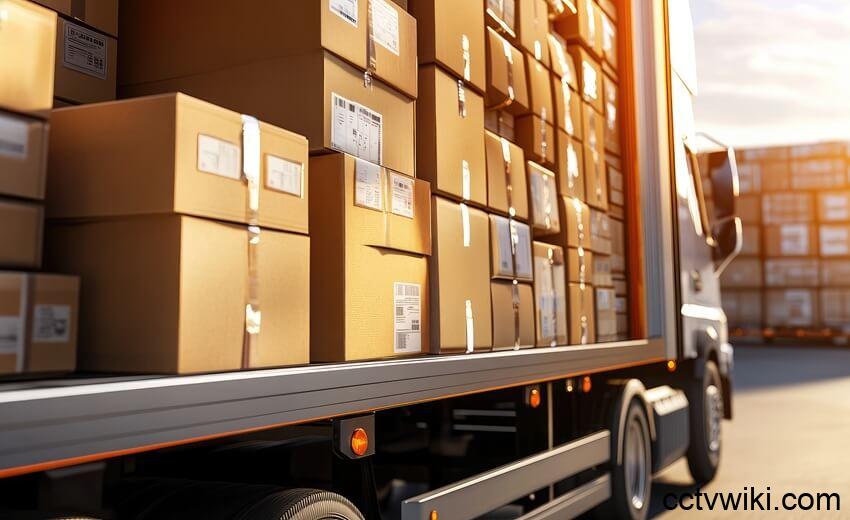Logistics and e-commerce are inextricably linked, and ensuring the safe and secure delivery of online orders demands robust security and vigilant monitoring throughout the entire process. Security solutions are now essential to mitigate risks like tampering and fraud.
The journey of your online purchase, from the initial click to its arrival at your doorstep, sets in motion a complex logistics process—a carefully orchestrated flow of goods from origin to consumption. Securing each step is vital to prevent potential disruptions and maintain the integrity of the delivery. Let’s explore the pivotal role security systems play in safeguarding this process.
Securing the Online Order
The logistics process begins the moment you click “order.” This initial transaction must be protected to prevent the leakage or interception of your sensitive data.
“The online purchasing process involves exchanging sensitive data, from payment details to personal information, which requires end-to-end encryption. To secure this, most systems today rely on advanced encryption protocols and multi-factor authentication (MFA) or other modern authentication methods such as password-less authentication to verify both the user and the merchant. In many cases, tokenization is used to replace personal data with unique encrypted identifiers, which significantly reduces the risk of exposure,” explains Stéphane Quetglas, Director of IoT Consumer and Industrial Marketing at Thales. “Behind these mechanisms, Public Key Infrastructure (PKI) and digital certificates (areas where Thales has decades of expertise) ensure that communications and data exchanges remain authentic and confidential. In short, cybersecurity is not an afterthought; it’s built into the heart of modern systems.”
Warehouse Security: A Fortress for Your Goods
Warehousing forms a crucial link in the logistics chain. Warehouses face diverse security threats, including theft and unauthorized entry, making advanced security systems indispensable.
“Warehouses use dome cameras, bullet cameras, fisheye cameras for wide angle coverage and low light or night vision cameras for dark areas. AI video analytics can detect unusual movement. Warehouses commonly use RFID card, access PIN codes and biometrics like fingerprint or facial recognition to control who enters and exits,” notes Noor Ul Mushtaq, Head of Product Management at Nundlab.
He further elaborates, “These systems track stock levels, record item movement, verify shipments and help detect errors or missing goods. They also link with RFID and barcode systems for real time inventory visibility. Intrusion alarms motion sensors fire detection GPS tracking for high value assets and cybersecurity tools to protect digital systems.”
Protecting Goods in Transit
While your order is en route, various tracking and monitoring technologies work in concert to guarantee its integrity.
“This is where Thales’ IoT solutions for Track & Trace play a central role. Our secure IoT eSIM/iSIM ensure that trackers can provide reliable data to logisticians by always connecting to the most appropriate cellular network. With this, trackers allow real-time tracking of devices and goods in transit. These modules continuously send encrypted data about location, temperature, humidity, and shock levels, ensuring full visibility over the shipment’s integrity,” says Quetglas. “If a shipment deviates from its planned route alerts are automatically triggered.”
The Final Mile: Secure Delivery
The delivery stage marks the culmination of the logistics process. “Delivery staff scan barcodes or QR codes to confirm the right item. Customers provide electronic signatures or a one-time password code. Some services use mobile apps to confirm the exact time and location of delivery with photo proof,” explains Mushtaq.
The Power of AIoT
The fusion of Artificial Intelligence (AI) and the Internet of Things (IoT), often referred to as AIoT, is revolutionizing logistics security.
“AI analyzes data to detect risks, reduce delays and predict maintenance. It can spot unusual activity on cameras or inventory systems. IoT devices collect real time data about goods environment and vehicle status. Together they improve visibility, accuracy and security from online purchase until final delivery,” says Mushtaq.
Quetglas emphasizes, “AI and IoT are the backbone of smart logistics, but only when they are trusted and secure. IoT sensors provide a continuous stream of real-time data, while AI algorithms process that data to predict delays, detect anomalies, and optimize delivery routes. For instance, AI can detect suggests an issue (from transport to delivery). By combining IoT’s connectivity with AI’s predictive power, underpinned by Thales’ secure by design approach, we enable a logistics ecosystem that is not only efficient but resilient and trustworthy.”

